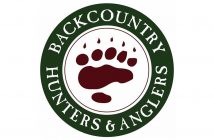 You’ve probably heard about it already… either from the company, or the competition that’s actively sniping, in the wake of Far Bank’s decision to open a direct-sales conduit in 2016. Here’s what we’re saying in the next print issue of Angling Trade (with expanded quotes from the company):
You’ve probably heard about it already… either from the company, or the competition that’s actively sniping, in the wake of Far Bank’s decision to open a direct-sales conduit in 2016. Here’s what we’re saying in the next print issue of Angling Trade (with expanded quotes from the company):
Other iconic fly brands like Orvis, and Patagonia, and more recently, Simms Fishing Products, play the consumer sales channels. Direct sales are part of the game now… especially in a paradigm where the Internet factors so forcefully. Face it: You’d be silly to manufacture anything and avoid the E-commerce channel in this day and age, whether you owe something to the specialty retailers who have had a hand in building your brand for decades or not.
Thing is, Sage is a somewhat different animal. Sage was the “specialty products for specialty dealers serving specialty anglers” brand. And RIO Products, the fly line company Far Bank acquired in 2005, was once legendary for protecting dealer turf.
Thus, while Sage and RIO might not want the distinction, those companies might be the magic dominoes. And the question that results when those dominoes fall is whether or not the specialty dealer can stay relevant, and viable, and profitable in years to come.
For the record, Far Bank insists it is still behind the specialty dealer. In fact, the company thinks this could open more avenues to grow the sport, and better serve the fly consumer.
“Today’s consumer expects a relationship with the Brand,” said Tag Kleiner, Far Bank’s VP of marketing. “As much as it may sound like lip service, we don’t look at this as a direct sales (program), but rather a customer experience initiative. Both Sage and RIO have a large breadth of unique, specialized products that are the result of exhaustive R&D. We want anglers to be educated on the equipment options and find the optimized gear they need for their specific fly fishing adventure. ”
We asked Kleiner, point-blank, “What’s to protect the dealer from having someone come in and wiggle the new rod, get the sales spiel, make some test casts (at the expense of the local shop) and then feign cold feet, only to order the product online to save a few bucks (like state sales tax)?”
Tag is a straight shooter. “If the consumer is price shopping online, that’s already happening and we’re not going to play that game. We will not interrupt a relationship that a dealer has with a consumer.” He said there’s going to be no pricing incentive for buying on the Sage site. The site is going to offer options (a la what Simms did) that direct consumers back to local shops first, online affiliates second, and as a last resort offer an alternative of a direct purchase at full MSRP pricing and applicable sales tax. (By the way, a consumer can already circumvent the sales tax in many cases by ordering online from another out-of-state shop. Scummy, perhaps, but viable.). And the extra points Sage (or RIO) earns on a direct sale? Much of that will be plowed back into things like R&D, sales programs, conservation support, and marketing efforts that grow demand, and hopefully drive more consumers to shops to test and buy rods and reels in the first place.
Some retailers we spoke with are skeptical
Mike Michalak, owner of The Fly Shop in Redding, California, is disappointed, but he acknowledges that this is a sign of the times. He noted: “The Sage and RIO products are targeted for a more sophisticated audience and they are brands that have been built by dealers and professionals. It is difficult to rationalize this move or paint that pig’s lips to disguise the motive. It is one more step on a slippery slope, bad for dealers, and bad for the sport.
“It is an understandable, profit-driven decision and it is unrealistic to expect any manufacturer to consider the welfare of their dealers before their own. At the same time, it would be equally unrealistic for any manufacturer to think that those dealers wouldn’t expect lower demand for items that are going to be sold elsewhere and respond by reducing inventory and enthusiasm.”
David Leinweber, owner of Angler’s Covey in Colorado Springs said: “If I have to lose a sale, I’d rather lose it to a manufacturer than to another fly shop. The bigger issue is the number of distributors in total. It’s a matter of deciding who can really represent a brand, and supporting those who can.”
The limited consumer research AT has been able to do thus far safely suggests that consumers are still going to stop by the shop before spending $800-plus on a fly rod. But we also know that dealers are going to have to up the game by way of expertise and insight.
“What we all really need to do is take a deep breath and see how this thing evolves,” Kleiner said. “Our actions will speak louder than words, and our objective is to elevate the consumer experience and help invite people to enjoy the fun of fly fishing. We certainly recognize that there is no better consumer experience than what our specialty dealers provide.
He’s right. This is the start of the discussion, not the end. It would be unwise to make any assumptions at this point, no matter where you sit. AT is going to stay on the story, and we’ll call it like we see it. Just like we always have.



